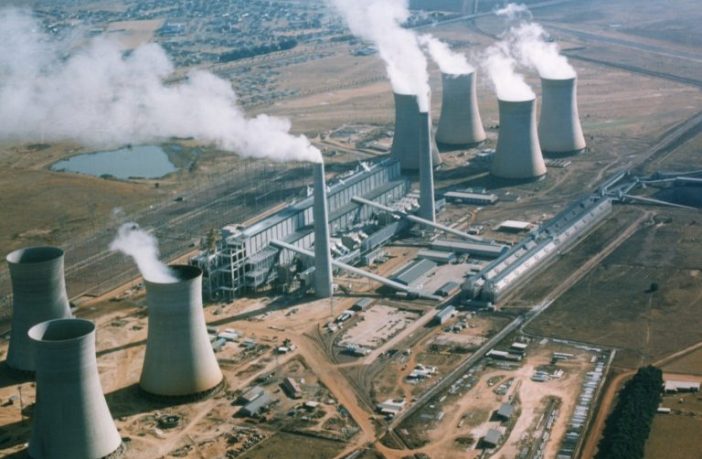- Eskom welcomes the recommendations of the VGBe report that was commissioned by National Treasury, in consultation with Eskom, as part of the plan to return the power utility to sustainability.
- The state owned and state run energy utility is bankrupt due to poor planning, corruption,fraud, theft, vanadalism and sabotage. Read more
- The utility, who relies on massive tax payer bailouts to survive,cannot meet the energy demand in the country causing blackouts for households and businesses for up to 10 hours daily. Read more
The investigation finds that the management system with its governance, structure and processes is dysfunctional and too complex plus Operation and Maintenance (O&M) must be improved and conducted according to industry standards.
National Treasury commissioned VGBE consortium consisting of Dornier, KWS, RWE and Steag, to conduct the independent assessment and compile a report. The assessment was conducted as part of conditions attached to the R254 billion debt relief arrangement for Eskom and some of the findings will be incorporated into Eskom’s 2024/25 Corporate Plan.
The report covers an assessment period from March to May 2023, coinciding with the inception of the Generation Operational Recovery Plan approved by the Eskom Board. During this time, significant developments occurred, including the appointment of Bheki Nxumalo as the Generation Group Executive in mid-April 2023.
The Generation Operational Recovery Plan addresses various operational observations at power stations. These initiatives focus on improving people, plant, and process performance. Regular progress updates are shared with the public every two weeks by the Minister of Electricity (MoE) and Eskom executives.
In October 2023, Eskom responded to VGBe and National Treasury outlining many of the improvements already made since their assessment period.
“We are thankful to the National Treasury for commissioning the report and for the debt relief, which has made funds available for much-needed capital to invest in planned maintenance, restore energy availability, and invest in other key projects across all divisions,” said Eskom’s Group Executive for Generation, Bheki Nxumalo.
Eskom claims that the over the nine months since the report’s assessment period, positive results have included design-related issues at Medupi and Kusile power stations, which have been addressed through modifications. This has improved maintenance and operations, and significantly improved plant availability. This is evident in the much-improved performance at Medupi, which remains among Eskom’s most-reliable power stations following the modifications.

Image credit: Eskom
Furthermore, as of January 2024, a total of 3 510MW was recovered through concerted efforts focusing on priority power stations. Each power station has its own detailed recovery plan, and these are centrally monitored to ensure successful implementation of the actions. The synchronisation of Kusile Unit 6 into the grid, the return of Medupi Unit 4 and Koeberg Unit 2 Long-Term Operation project are also on track. Combined, these three units will add 2 500MW to the grid by year-end.
The Generation Operational Recovery Plan has, so far, arrested the decline of the energy availability factor (EAF). Our objective remains to achieve an average of 65% in the month of March 2024 and an average of 70% in the month of March 2025. Notably, the Unplanned Capacity Loss factor (UCLF) also known as the unplanned outages, is on a positive trajectory, at 34% in January 2023, compared to 30% in January 2024 as depicted on the graph below.
In addition, as part of Generation Operational Recovery Plan and a conscious decision to address reliability challenges at the power stations, Planned Capacity Loss Factor (planned maintenance) was increased during the summer period in 2023 to an average of 8 000MW. The highest level of planned maintenance was performed between December 2023 and January 2024, reaching an average of 18% of the generation capacity.
These efforts demonstrate progress in stabilizing the power system and enhancing energy availability.
“The Board has asked our new Group Chief Executive, Dan Marokane, to assess the Generation Operation Recovery Plan with the view to accelerate its execution. He will also make sure that VGBe recommendations are implemented. As a team, we know that ending loadshedding largely depends on disciplined execution of our recovery plan” concluded Nxumalo.
Eskom week-on-week energy availability factor EAF for 2023. Data source: Eskom. Image credit: Chris Yelland. Chris is an energy analyst, consultant, electrical engineer, public speaker, writer and MD at EE Business Intelligence (Pty) Ltd. Follow Chris on X – @chrisyelland
The latest Eskom Energy Availability Factor (EAF) for Week 7, 2024, is 52.79%, with the year-to-date EAF slightly lower than for the same period last year. This despite the return to service of 3 x 800 MW generator units (Units 1, 2 and 3) at Eskom Kusile Power station in November 2023, and the synchronisation of Kusile Unit 4 to the grid in December 2023.
Link to the full report HERE: VGBE Eskom Report
Author: Bryan Groenendaal
















